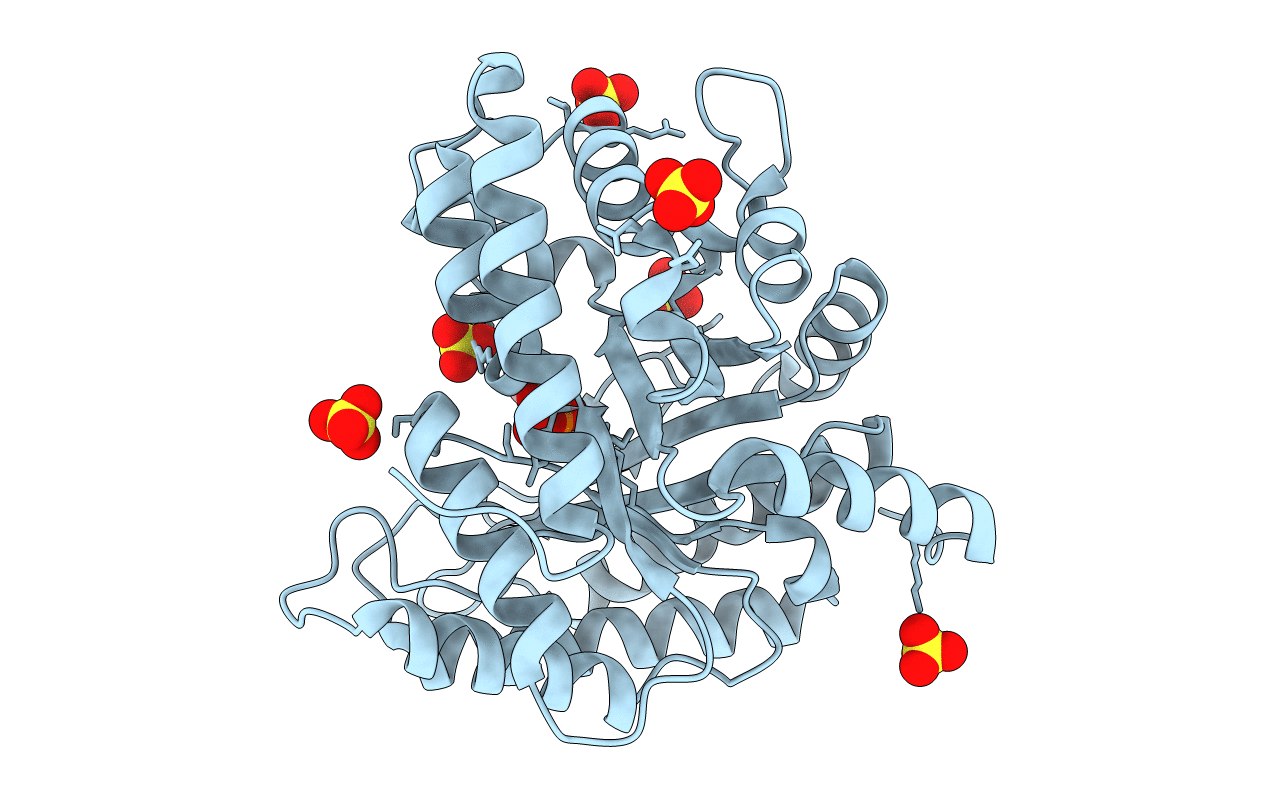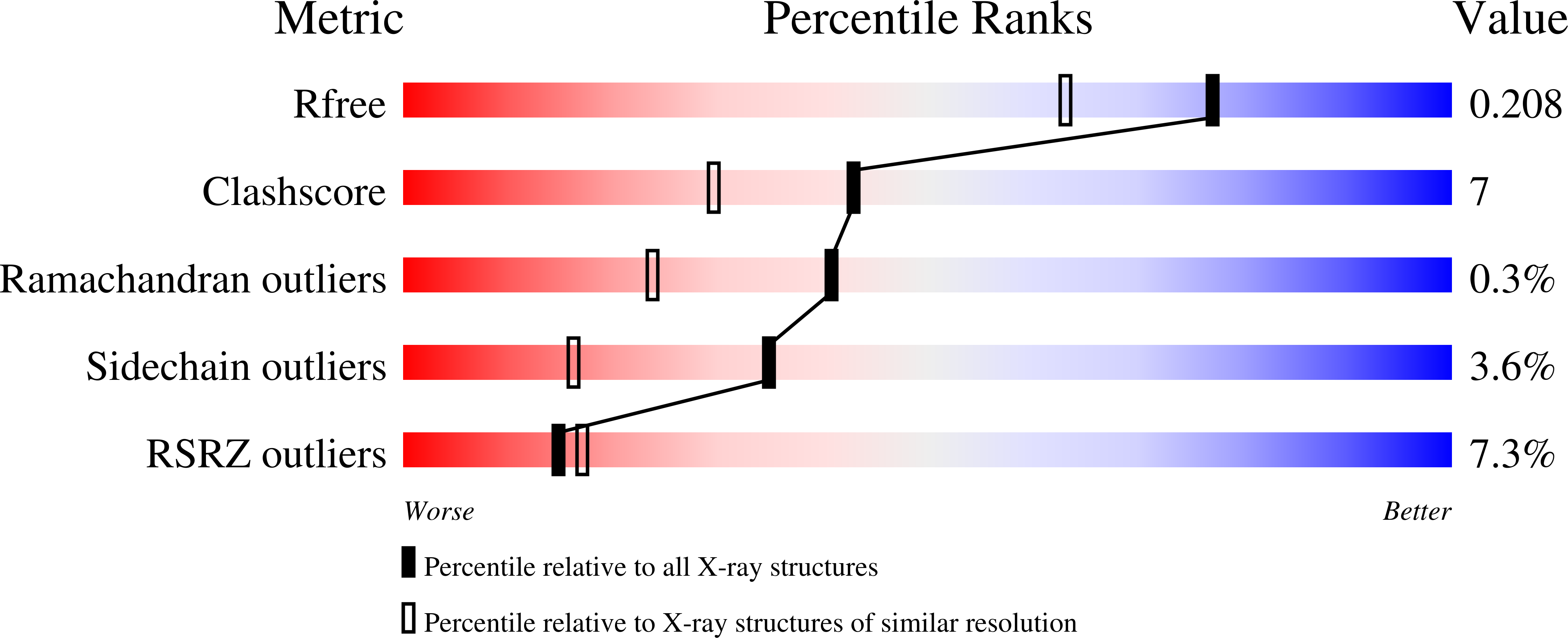
Deposition Date
2008-01-04
Release Date
2008-06-24
Last Version Date
2023-08-30
Entry Detail
PDB ID:
3BV4
Keywords:
Title:
Crystal structure of a rabbit muscle fructose-1,6-bisphosphate aldolase A dimer variant
Biological Source:
Source Organism:
Oryctolagus cuniculus (Taxon ID: )
Host Organism:
Method Details:
Experimental Method:
Resolution:
1.70 Å
R-Value Free:
0.21
R-Value Work:
0.19
R-Value Observed:
0.19
Space Group:
P 21 21 2


